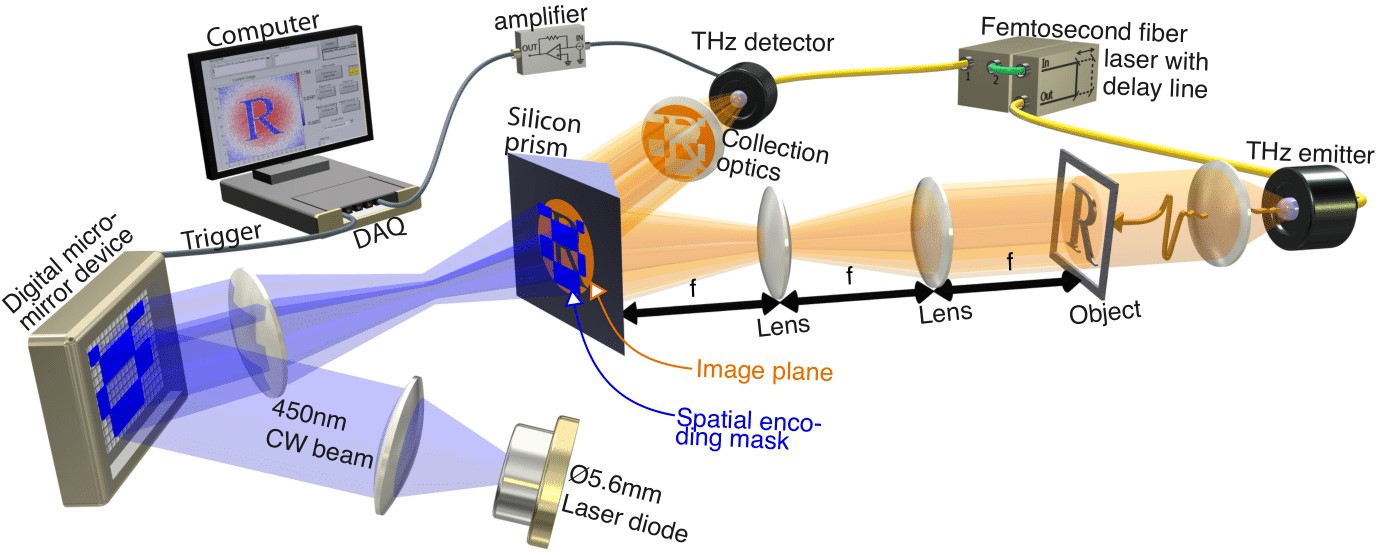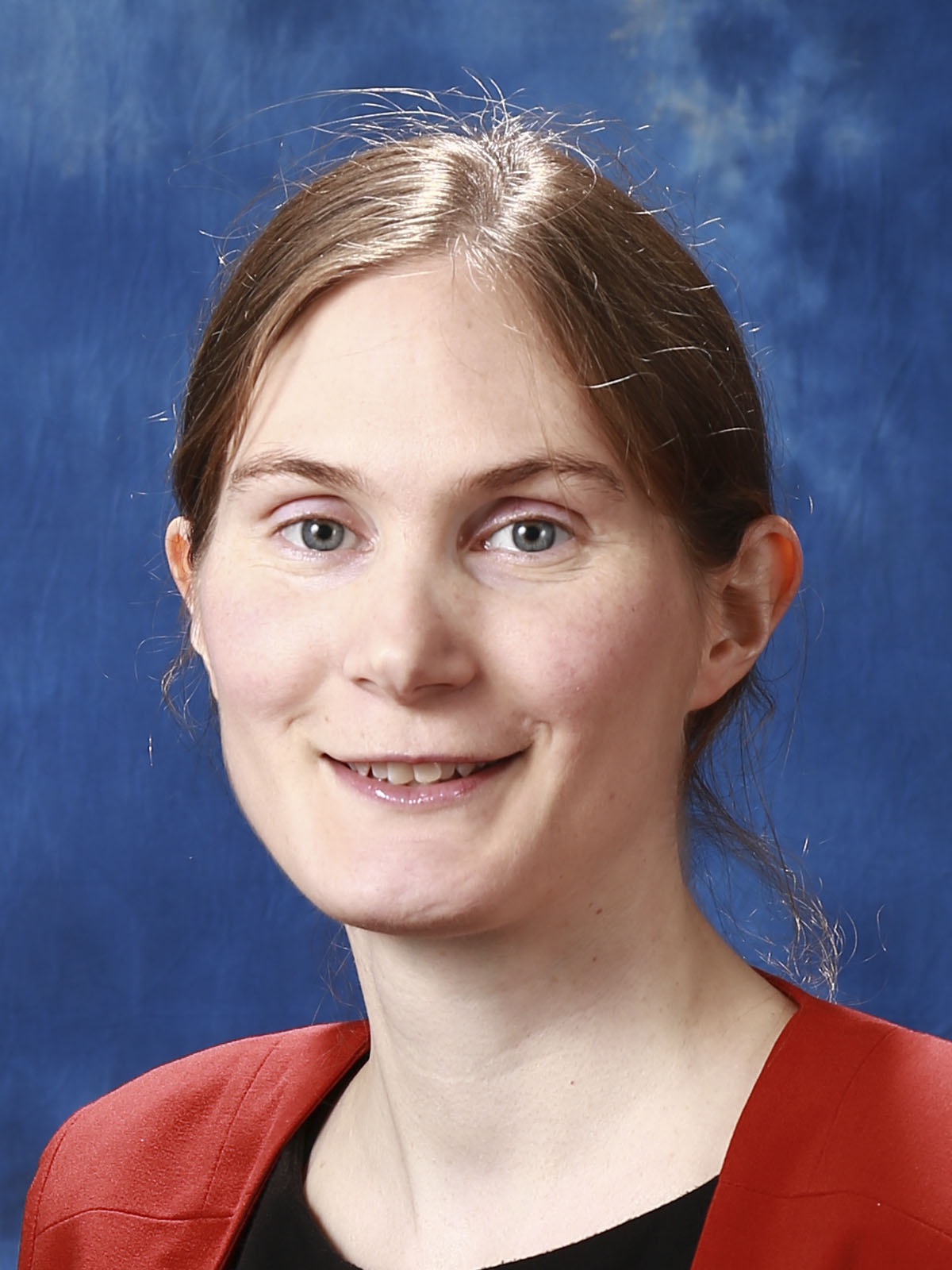CUHK
News Centre
A Breakthrough by CUHK Engineering and University of Warwick TeamsT-ray Camera Speed Boosted a Hundred Times Over
A research team from The Chinese University of Hong Kong (CUHK) and the University of Warwick has reached a crucial milestone towards developing single-pixel terahertz radiation (T-ray) imaging technology. Their single-pixel T-ray camera reached 100 times faster acquisition than the previous state-of-the-art without adding any significant costs to the entire system or sacrificing the sub-picosecond temporal resolution needed for the most sought-after applications, potentially opening the opportunity for them to be used in non-invasive security and medical screening. The breakthrough has been published in the journal Nature Communications.
The potentials and problems of Terahertz radiation
Terahertz (THz) radiation, or T-rays, sit in-between infrared and Wi-Fi on the electromagnetic spectrum. T-rays have different properties from other electromagnetic waves, most notably they can see through many common materials such as plastics, ceramics and clothes, making them potentially useful in non-invasive inspections. Another quality is that the low-energy photons of T-rays are non-ionizing, making them very safe in biological settings including security and medical screening. They are also highly sensitive to water and can observe minute changes to the hydration state of biological matter. This means that diseases perturbing the water content of biological matter, such as skin cancer, can potentially be detected using T-rays in vivo without any histological markers.
Efficient detection and generation of T-rays has been possible in laboratory settings for the last 25 years. However, THz technology is still not widely used in commercial settings as the cost, robustness and/or ease of use is still lagging behind for commercial adoption in industrial settings.
The advantages of single-pixel cameras
Professor Emma Pickwell-Macpherson from the Department of Electronic Engineering at CUHK and the Department of Physics at University of Warwick, said: “We use what is called ‘a single-pixel camera’ to obtain our images. In short, we spatially modulate the THz beam and shine this light onto an object. Then, using a single-element detector, we record the light that is transmitted (or reflected) through the object we want to image. We keep doing this for many different spatial patterns until we can mathematically reconstruct an image of our object.”
The researchers have to keep changing the shape of the THz beam many times which means this method is usually slower compared to multi-pixel detector arrays. However, multi-pixel arrays for the terahertz regime usually lack sub-picosecond temporal resolution, require cryogenic temperatures to operate or incur large equipment costs (>US$ 350,000). The setup developed by the CUHK Engineering and Warwick team, which is based on a single-element detector, is reasonably priced (~US$20,000), robust, has sub-picosecond temporal resolution (needed for accurate diagnosis) and operates at room temperature.
Professor Pickwell-Macpherson adds: “Our latest work improves upon the acquisition rate of single-pixel terahertz cameras by a factor of 100 from the previous state-of-the-art, acquiring a 32×32 video at 6 frames-per-second. We do this by firstly determining the optimal modulation geometry, secondly by modelizing the temporal response of our imaging system for improvement in signal-to-noise, and thirdly by reducing the total number of measurements with compressed sensing techniques. In fact, part of our work shows that we can reach a five times faster acquisition rate if we have sufficient signal-to-noise ratio.”
The research team led by Professor Pickwell-Macpherson has previously developed several THz devices including THz modulators that make use of the total internal reflection geometry to achieve high modulation depths across a broadband frequency range and a new approach for amplitude and phase modulation exploiting the Brewster angle. They are also working to improve the resolution of single pixel THz imaging through signal processing approaches. Future work will focus on improving the signal-to-noise and optimizing the software needed for accurate medical diagnosis, with the ultimate goal being to use single-pixel THz imaging for in vivo cancer diagnosis.
The research paper has been published in Nature Communications: https://doi.org/10.1038/s41467-020-16370-x
Read more about the research: http://bme.ee.cuhk.edu.hk/thzgroup/index.php and here: go.warwick.ac.uk/ultrafast





